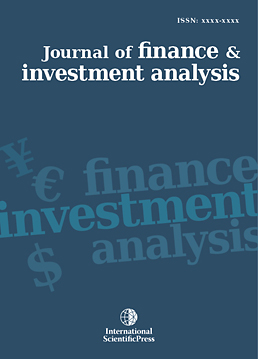Journal of Finance and Investment Analysis
Comparing Historical and Implied Volatility Estimates in Efficient Portfolios
-
 [ Download ]
[ Download ]
- Times downloaded: 10978
Abstract
This paper evaluates the performance of efficient portfolios with differing sources of volatility estimation. One of the primary assumptions of modern portfolio theory is that the parameters, asset means, standard deviations and covariance, are known. In practice these values are not known and have to be derived from reliable and accurate sources. Two sources of volatility estimation are compared in this paper; the classical statistical approach and Black-Sholes implied volatility. The time horizon preceding, during and after the financial crisis of 2008-9 is used to evaluate the two sources of information by generating competing monthly tangency portfolios. The results suggest that while historical statistical estimates outperform there is no statistically significant difference between the two over the given time horizon. However, this is partially due to there being a tendency for implied volatility to remain over inflated beyond the crisis into the recovery period. This then leads to significant losses in portfolios that solely use the implied volatility measure.
